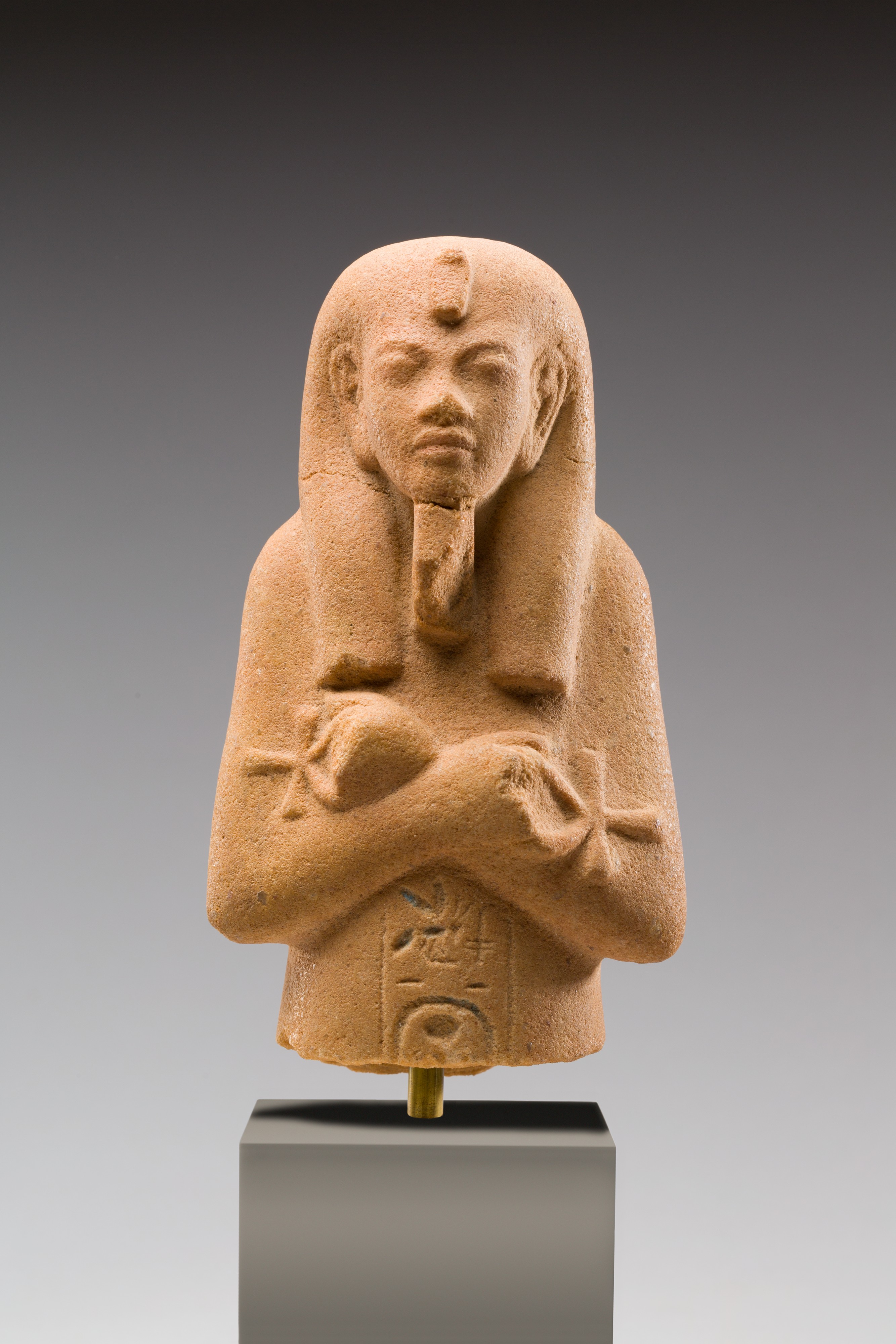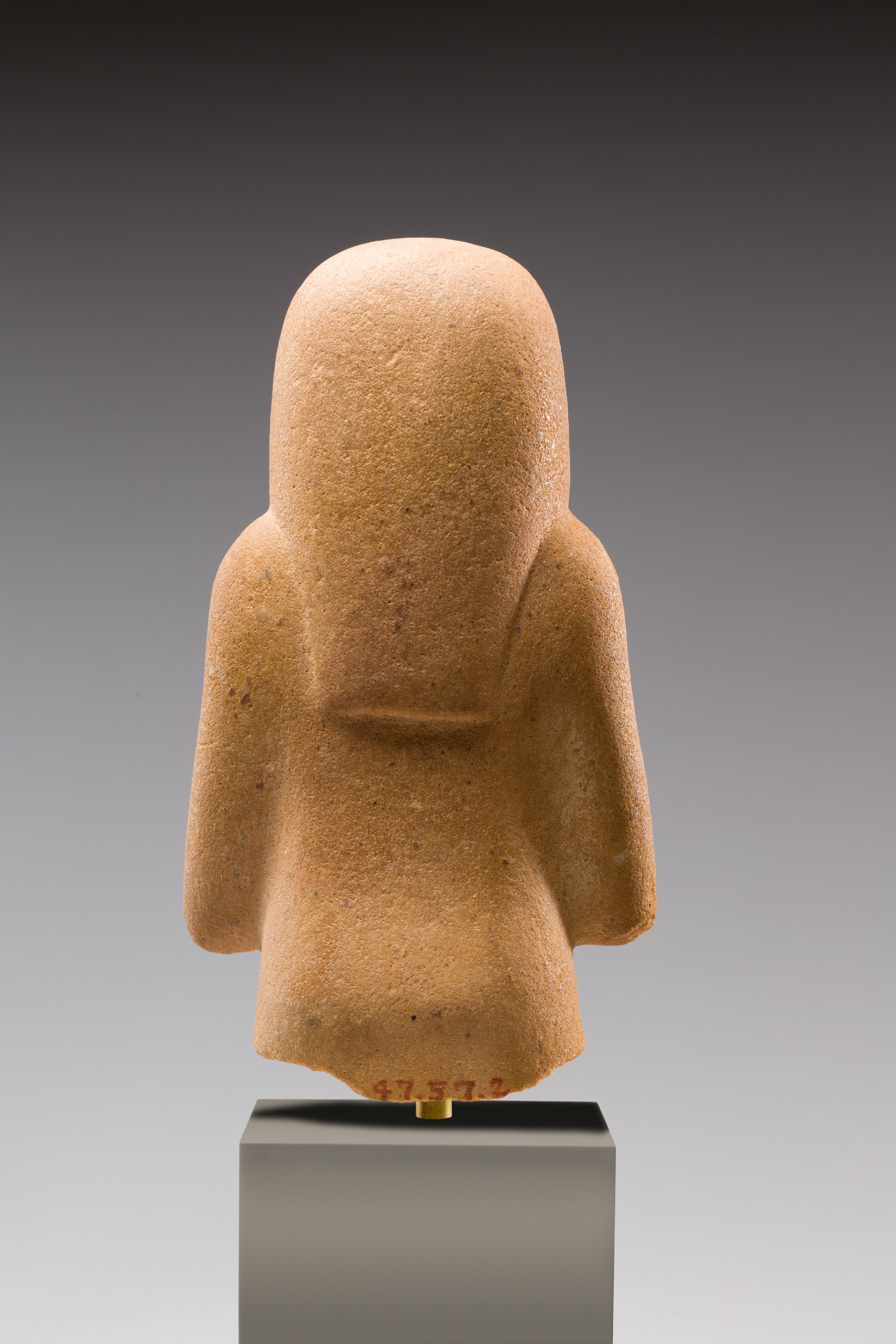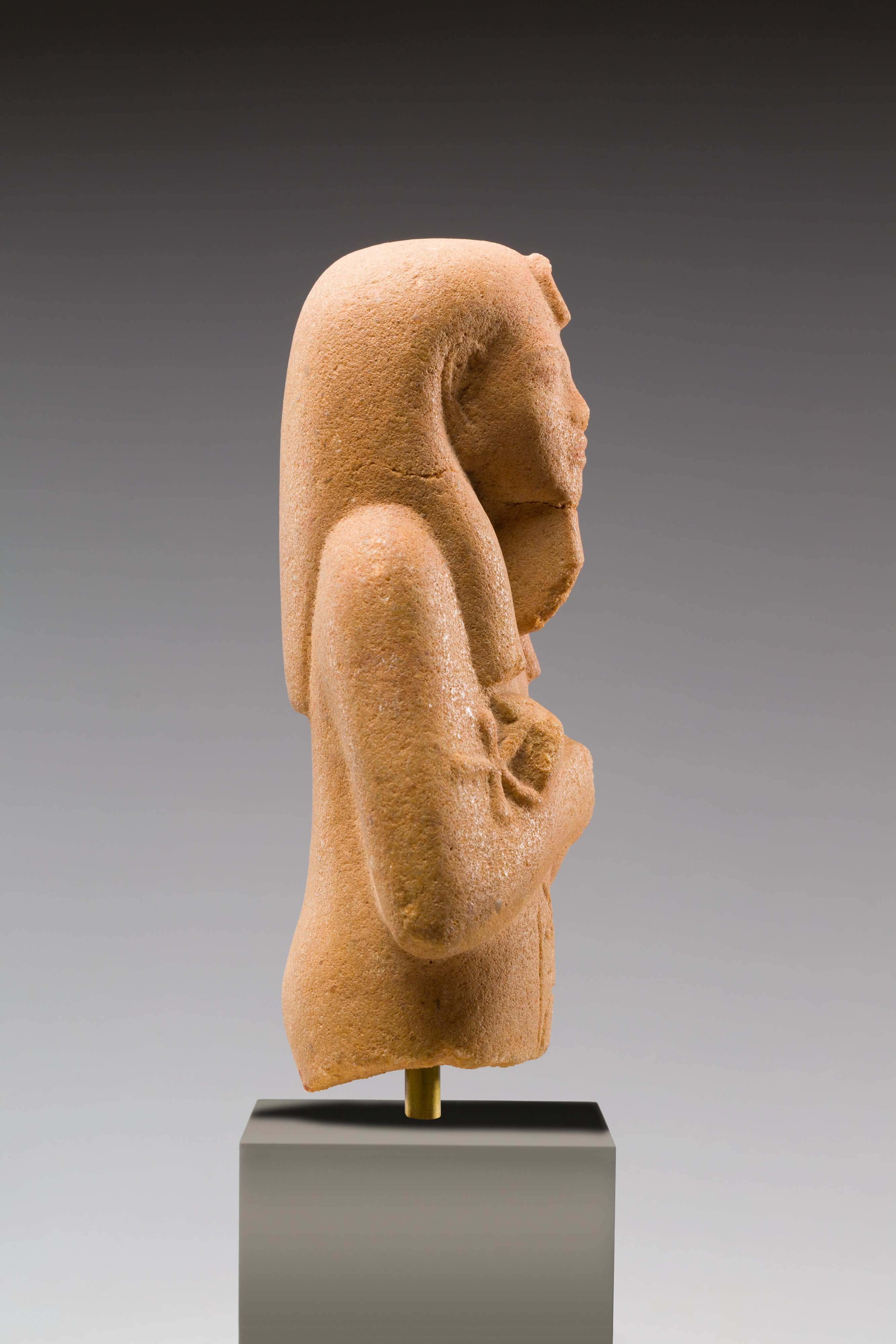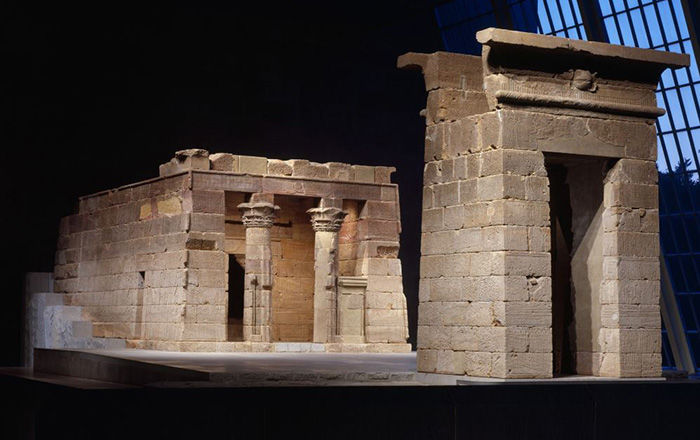Funerary Figure of Akhenaten
New Kingdom, Amarna Period
Shabtis are small funerary figures intended to perform work that the deceased was called upon to do in the afterlife. To serve this purpose, the figures were inscribed with the shabti spell, chapter six of the Book of the Dead. More than two hundred fragmentary funerary figures inscribed for Akhenaten are known, and their existence suggests that belief in the afterlife and certain aspects of traditional funerary practices survived during the Amarna period. However, Akhenaten's figures are inscribed only with the king's names and titles (see also 66.99.106), not with the standard shabti spell (as seen on 30.8.57).
This figure shows Akhenaten clutching two ankh hieroglyphs rather than the hoe and pick that are more traditional attributes of shabtis (see 26.7.919). He also wears a tripartite wig rather than the nemes headcloth that is more common for royal shabtis (as on 66.99.35 and 66.99.36). The "sfumato" eyes, in which only a minimum of detail is indicated, are a frequent feature of Amarna funerary art (see 66.99.38).
This image cannot be enlarged, viewed at full screen, or downloaded.
This artwork is meant to be viewed from right to left. Scroll left to view more.









